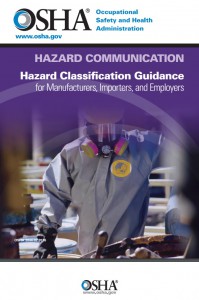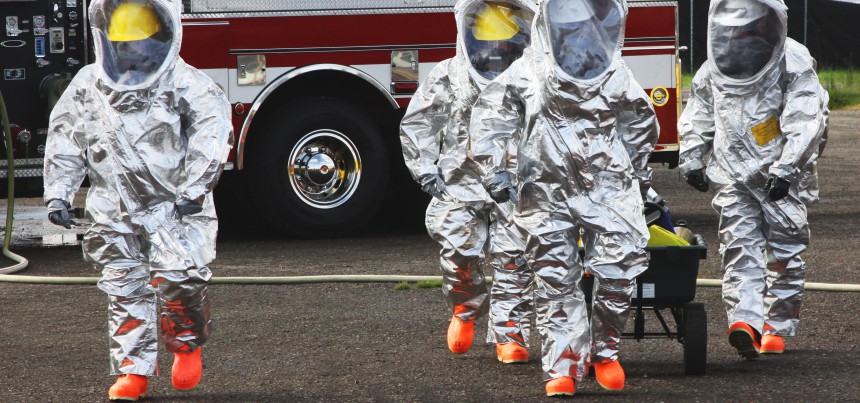New OSHA Hazardous Materials Classification Guide for Manufacturers, Importers, and Employers
OSHA Hazardous Materials Classification Guide for Manufacturers, Importers, and Employers
Occupational Safety and Health Act of 1970 “To assure safe and healthful working conditions for working men and women; by authorizing enforcement of the standards developed under the Act; by assisting and encouraging the States in their efforts to assure safe and healthful working conditions; by providing for research, information, education, and training in the field of occupational safety and health.”

OSHA Hazardous Materials Classifications Guide
OVERVIEW
In March 2012, the Occupational Safety and Health Administration (OSHA) revised its Hazard Communication Standard to align it with the United Nations Globally Harmonized System of Classification and Labelling of Chemicals (GHS), Revision 3. The revision to the Hazard Communication Standard (HCS) built on the existing standard, by requiring chemical manufacturers and importers to follow specific criteria when evaluating the hazardous chemicals and when communicating the hazards through labels and safety data sheets (SDSs). This document is designed to help manufacturers and importers of chemicals not only identify chemical hazards, but also to classify these hazards so that workers and downstream users can be informed about and better understand these hazards as required by OSHA’s Hazard Communication Standard. This guidance may also be useful to employers who decide to conduct hazard classifications to assure the accuracy and completeness of information provided to them by suppliers. Understanding the hazards is the critically important first stage in the process of establishing an effective hazard communication program. The process of hazard classification consists of four basic steps. Selection of chemicals to evaluate; Collection of data; Analysis of the collected data; and Records of the rationale behind the results obtained. This document provides guidance on the processes involved and identifies considerations in the conduct of hazard classifications. Guidance on the allocation of the hazard communication label elements is provided in an OSHA Brief on Labels and Pictograms, located on the Hazard Communication webpage, at www.osha.gov/hazcom. Material contained in this publication is in the public domain and may be reproduced, fully or partially, without permission. Source credit is requested but not required. How this Document is Organized This guidance is organized into several chapters. Chapter I introduces the guidance. Chapter II provides an overview of the hazard classification process. Chapter III discusses how to identify the chemicals to be classified. Chapter IV explains the process of data collection. Chapter V describes the process and information needed for data analysis. Chapter VI discusses the information that may be useful to note in recording the rationale used to develop the classification of the various hazards. Chapters VII, VIII, and IX present the guidance to classify health hazards, physical hazards, and hazards not otherwise classified covered by the Hazard Communication Standard, respectively.
Source: The Occupational Safety and Health Act.














